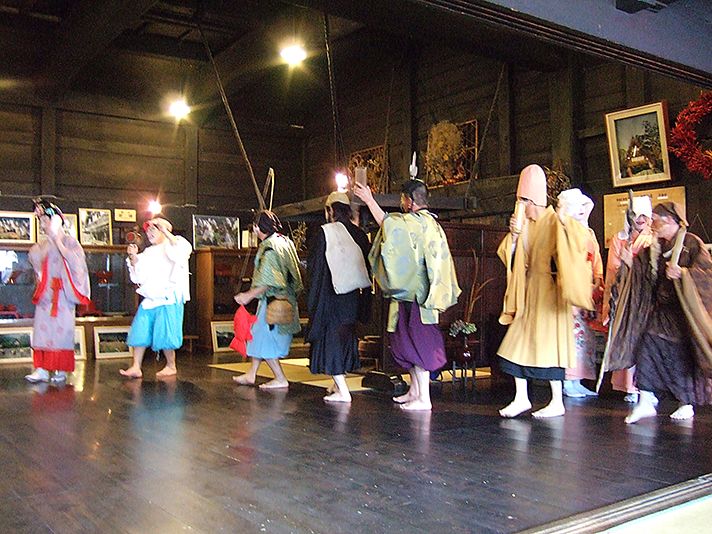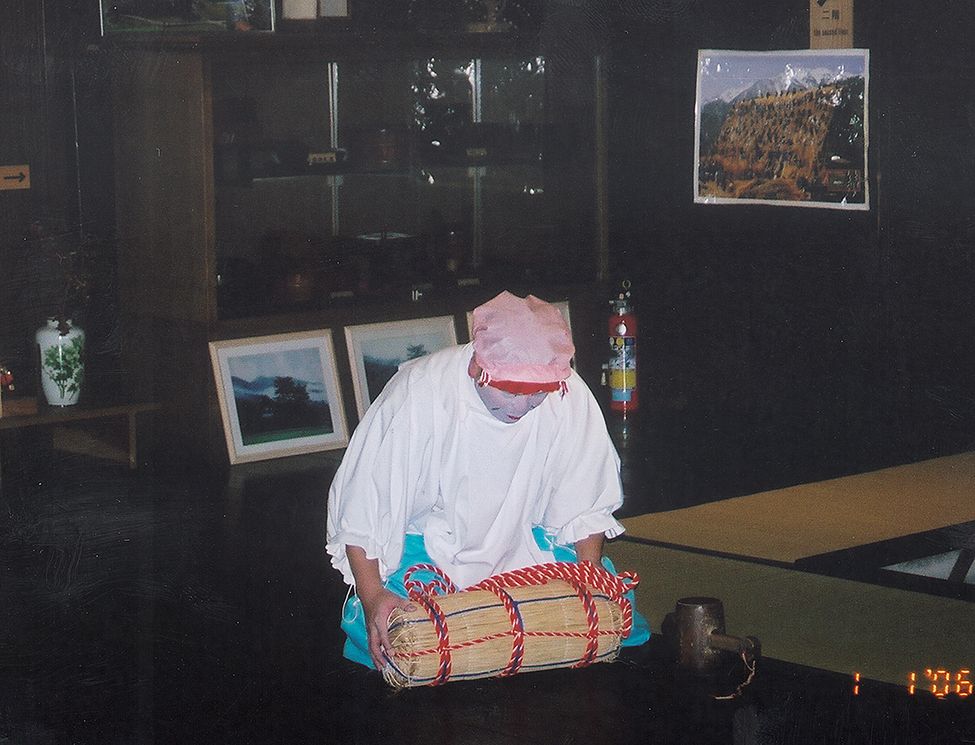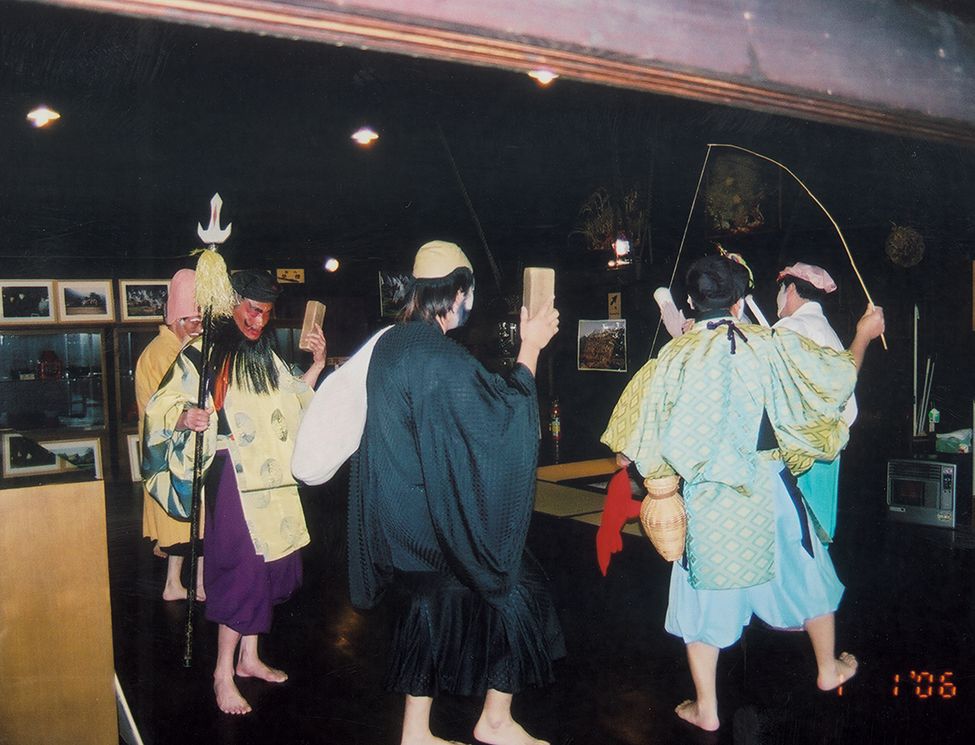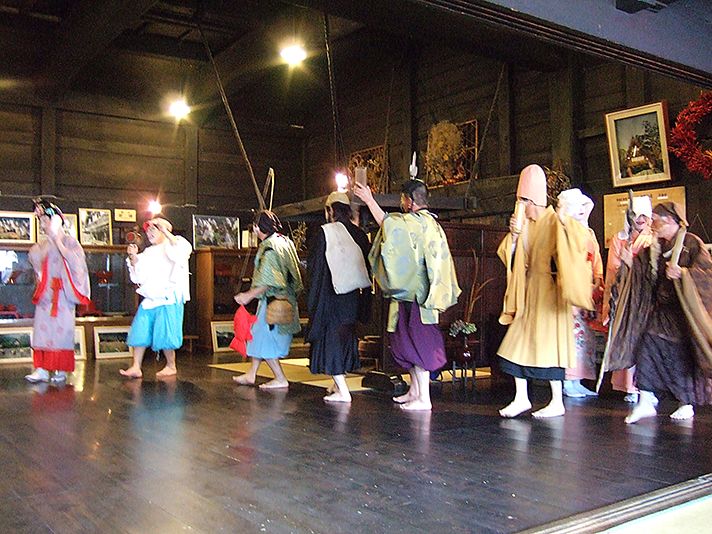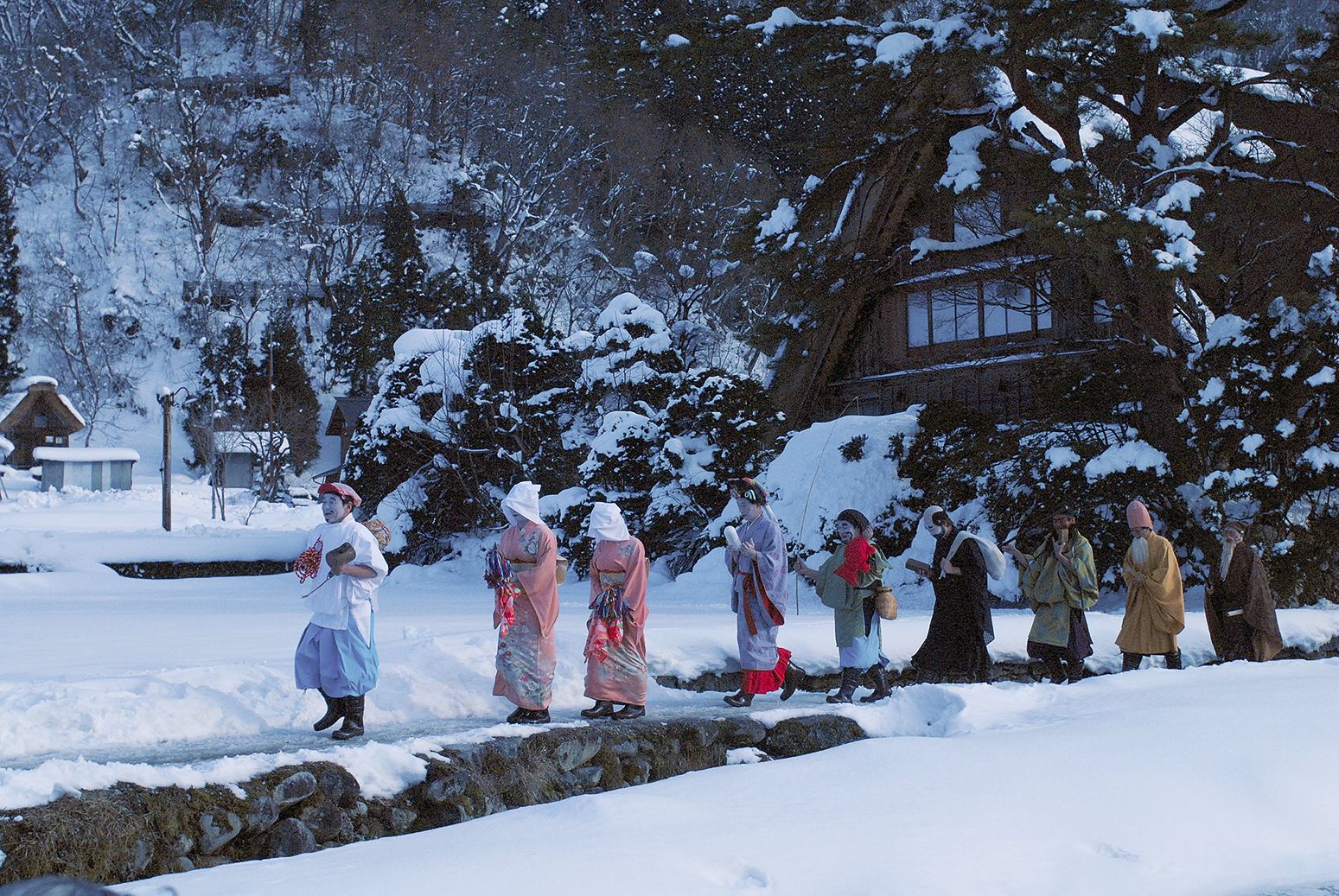正月の行事 春駒踊り
The New Year event - Harukoma Dance
春駒踊りは岐阜県指定重要無形文化財に指定され、正月をはじめ例祭、結婚式披露宴など祝事で演じられる踊りです。七福神、舞子に扮した人たちによって演じられます。
The Harukoma Dance, is a designated Gifu Prefectural Important Intangible Cultural Asset. It is a traditional local dance performed during special celebrations such as New Year, annual festivals and wedding ceremonies. Locals dress up and dance disguised as the 7 Gods of Fortune (known as Shichi-fuku-jin in Japanese) and Maiko (or apprentice geisha).
正月の春駒踊りは元日の午後に合掌集落を練り歩いて演じられます。元来、春駒踊りは養蚕の繁栄をいのる「こがい祭り」でしたが、養蚕が行われなくなった今日も五穀豊穣、家内安全の願いを込めて舞われています。大黒様が「一つころがしゃ一千俵、二つころがしゃ二千俵」とうたいながら俵を転がす姿は、雪深い白川郷に希望の春を呼ぶ大切な行事として村人の心に焼き付いています。
Harukoma Dance is held at noon on New Year's Day. The performers parade around the Gassho-style houses. Originally, Harukoma Dance was called “The Kogai Festival”; that is a festival for breeders of silkworms to pray for lucrative business with healthy silkworms. In recent years, however, the performances have been confined to wishing for a large harvest and a safe home. During the performance, the God of Wealth, or Daikoku-sama, rolls a straw bag while singing “One roll becomes a thousand straw bags, two rolls become two thousand straw bags”. It is an important event which strongly imprints in the villager's minds the prospect of a splendid spring whilst snow still lies deeply about.
